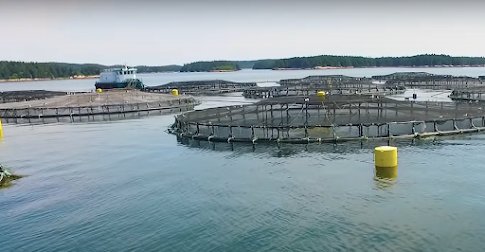Aquaculture is the farming of aquatic organisms such as fish, shrimp, shellfish and aquatic plants. Open ocean aquaculture is defined as the ‘rearing of marine organisms under controlled conditions in the EEZ—from the three-mile territorial limit of the coast to two hundred miles offshore.
Open Ocean farming is conducted in areas that are not sheltered by land and have exposure to extreme sea conditions.
Open ocean waters offer a tremendous potential for expansion of the marine farming sector and developments to date indicate that it is indeed feasible to install, maintain and operate culture systems for fish and shellfish high-energy offshore waters to produce high quality seafood.
Open ocean aquaculture employs less control over organisms and the surrounding environment than do inshore and land-based aquaculture, which are often undertaken in enclosures, such as ponds.
Open ocean aquaculture facilities consist of systems (e.g., cages, net-pens, longline arrays) that can be free-floating, secured to a structure, moored to the ocean bottom, or towed by a vessel.
Favorable features of open ocean waters include ample space for expansion, tremendous carrying capacity, high water quality, less visual concern, reduced conflict with many user groups, greater dispersion of nutrients, lower exposure to human sources of pollution, the potential to reduce some of the negative environmental impacts of coastal fish farming.
Fish farming in open ocean
The term "fish" is used to classify a particular type of food, similar to the way meat, poultry, and cheese are categorized. The variety of fish species exceeds that of other food groups, with the United States alone incorporating at least 50 different types of fish and shellfish for human consumption.
Popular Posts
-
Living fishes are comprised of two primary taxonomic groups. Rays, along with sharks and chimaeras (elephant fish, ghost sharks, rabbitfishe...
-
Docosahexaenoic acid (DHA) is a vital omega-3 fatty acid predominantly found in fatty fish like salmon, mackerel, sardines, and anchovies. A...
-
Smoking fish is an age-old technique that blends preservation and flavor enhancement, making it a cherished practice across many cultures. ...
-
Oysters in United States There are five species of oysters in the United States, three on the East Coast, and two on the West Coast, one of...
-
Sea stars, also referred to as starfish, belong to the class Asteroidea, which is a star-shaped phylum of echinoderms. They are part of the ...






